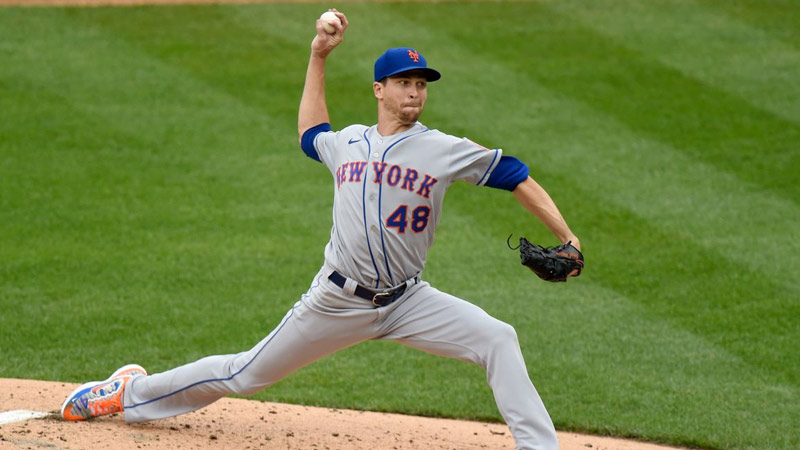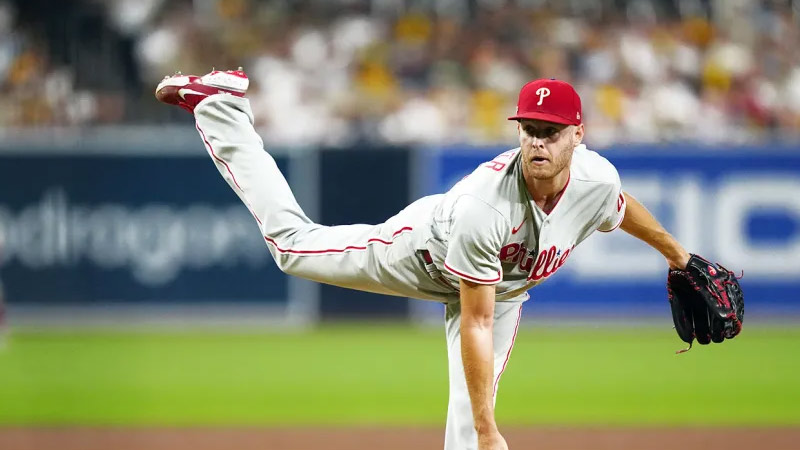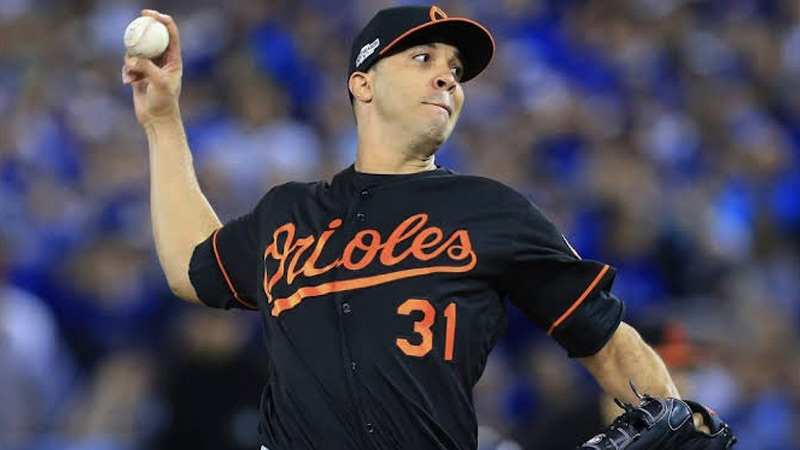Baseball, often referred to as “America’s Pastime,” has captured the hearts of millions of fans worldwide with its rich history and strategic gameplay.
Among the key players that make this sport exciting and unpredictable are the pitchers, the athletes responsible for delivering the ball to the opposing batters.
One of the essential roles in a baseball game is that of the starting pitcher. In this blog post, we’ll delve into the significance of the starting pitcher, their responsibilities, and their impact on the outcome of the game.
Whether you’re a seasoned baseball enthusiast or a newcomer to the sport, understanding the role of the starting pitcher is essential in appreciating the beauty and complexity of America’s beloved game. Stay focused.
What is the Starting Pitcher called?
The Starting Pitcher in baseball is also commonly referred to as the “Starting Pitcher” or simply “Starter.” This player is the first pitcher to take the mound for a team at the beginning of a game.
Their primary role is to pitch to the opposing team’s batters and try to get outs while preventing runs from scoring.
Starting pitchers typically have more time to prepare for their appearance and are expected to pitch multiple innings, usually aiming to last at least five or six innings before being relieved by a relief pitcher.
Starting Pitcher in MLB

Source: faketeams.com
In Major League Baseball (MLB), the starting pitcher is a key player on each team’s roster. As the name suggests, the starting pitcher is the first pitcher to take the mound at the beginning of a game.
Their role is to pitch to the opposing team’s batters and try to get outs while preventing runs from scoring.
Here are some important points about the Starting Pitcher in MLB:
Preparing for the Game
Before the game, the starting pitcher studies the opposing team’s lineup and formulates a game plan with the team’s catcher and pitching coach.
They analyze the strengths and weaknesses of the opposing batters to determine the most effective pitching strategy.
Pitching Performance
The starting pitcher’s performance is critical to the team’s success. They typically aim to pitch at least five or six innings, although exceptionally skilled pitchers can go deeper into the game.
The primary objective is to keep the opposing team from scoring runs while giving their own team a chance to build an advantage.
Rotational Role
Starting pitchers are part of a team’s pitching rotation, which consists of several starting pitchers who take turns pitching in games. The order of the rotation may vary based on factors such as rest, pitch count, and the pitcher’s recent performance.
Pitch Repertoire
Starting pitchers usually have a variety of pitches in their arsenal, including fastballs, curveballs, sliders, changeups, and more. The ability to mix pitches effectively and keep batters off balance is crucial for success.
Bullpen Support
Once the starting pitcher’s performance declines, or they reach a predetermined pitch count, they are relieved by a bullpen pitcher. The bullpen is a group of relief pitchers who specialize in shorter appearances, coming in to pitch after the starting pitcher leaves the game.
Pitch Count
Pitchers’ arms are under a lot of stress, so teams closely monitor the starting pitcher’s pitch count. High pitch counts can lead to fatigue and increase the risk of injury, so managers often make decisions based on the pitcher’s pitch count and performance.
Rest and Recovery
Starting pitchers usually have four to five days of rest between starts. Proper rest and recovery are essential to maintaining their performance and avoiding injuries.
Impact on Team Momentum
A strong performance by the starting pitcher can energize the team and provide momentum, while a struggling performance can put the team at a disadvantage.
Types of Pitchers in Baseball
In baseball, there are various types of pitchers, each with specific roles and responsibilities. The main types include:
Starting Pitcher
As mentioned earlier, the starting pitcher begins the game and sets the tone for the team’s pitching performance. They have more time to rest and prepare between games.
Relief Pitcher
Relief pitchers come into the game to replace the starting pitcher or other pitchers when they need a break. They are typically used in specific situations, such as when the starting pitcher gets tired or when there are critical moments in the game that require a different pitching strategy.
Closing Pitcher (Closer)
The closing pitcher is a specialized relief pitcher responsible for finishing the game, particularly in close situations where the team has a small lead. Closers are known for their ability to maintain composure under pressure and secure victory for their team.
Role of the Starting Pitcher in Baseball

Source: fivethirtyeight.com
The starting pitcher is an essential cornerstone of any successful baseball team. Their role on the field encompasses a multitude of responsibilities that significantly influence the outcome of the game.
Let’s take a closer look at the various aspects that make the starting pitcher’s role crucial:
Setting the Tone
The starting pitcher’s performance during the early stages of the game can have a profound impact on the team’s morale and confidence. A strong start, with well-executed pitches and quick outs, can set a positive tone for the entire team.
Conversely, a shaky start or allowing early runs can create tension and pressure, making it challenging for the team to recover. The starting pitcher’s ability to command the game from the beginning is a testament to their skill and mental fortitude.
Pitching Quality Innings
Starting pitchers are expected to go deep into the game, pitching multiple innings to give their team the best chance to win. By working efficiently and effectively, they help alleviate the burden on the bullpen, which comprises relief pitchers.
Pitching quality innings means minimizing walks, hits, and runs while maximizing strikeouts and inducing ground balls or flyouts. A successful starting pitcher can provide stability and consistency, becoming a reliable anchor for their team’s defense.
Reading Hitters
One of the most crucial skills of a starting pitcher is their ability to read and analyze opposing batters. They must study the opposing team’s lineup, identifying each batter’s strengths, weaknesses, and tendencies.
Armed with this knowledge, the starting pitcher can adapt their pitch selection and location to exploit the hitters’ vulnerabilities.
Reading hitters allows them to mix their pitches effectively, keeping batters off balance and reducing the likelihood of solid contact or hard-hit balls.
Preserving the Bullpen
Pitchers’ arms are subject to considerable stress and fatigue, making it essential for the starting pitcher to shoulder a significant workload and pitch deep into the game. By doing so, they help preserve the bullpen’s energy and resources for later innings or subsequent games.
A strong start that minimizes the bullpen’s usage allows relief pitchers to remain fresh and available for crucial moments when they are needed the most. This conservation of bullpen resources becomes especially vital during long series or close contests.
Starting Pitcher Vs. Closing Pitcher
The distinction between the starting pitcher and the closing pitcher (closer) is vital to grasp the dynamic nature of baseball strategy and how different pitchers contribute to their team’s success.
Starting Pitcher
The starting pitcher initiates the game, taking the mound at the beginning of the first inning. Their primary objective is to pitch multiple innings and set the team up for success by neutralizing the opposing team’s offense.
Starting pitchers have more time to prepare for their appearances and are generally expected to last at least five or six innings, depending on their performance and pitch count.
Closing Pitcher (Closer)
The closer, as the name suggests, is a relief pitcher who appears late in the game, usually during the ninth inning, to protect a small lead and secure the victory for their team.
Closers are typically used in high-leverage situations, where the outcome of the game hangs in the balance. Their role is to finish the game strongly and prevent the opposing team from making a comeback.
Closers are often known for their composure and ability to handle pressure, as they must be effective in tight, high-stakes situations.
Best starting Pitchers in MLB of All Time
The history of Major League Baseball (MLB) is adorned with remarkable pitching talent, and when it comes to the best starting pitchers of all time, a few names stand out as enduring legends.
While many other outstanding pitchers have graced the game, the following individuals have left an indelible mark on baseball history:
Cy Young
As the namesake of the prestigious Cy Young Award, it’s no surprise that Cy Young himself is regarded as one of the greatest pitchers of all time.
During his illustrious career, which spanned from 1890 to 1911, Young achieved an astonishing 511 career wins, a record that seems unbreakable in the modern era of baseball. His unparalleled longevity, remarkable durability, and exceptional control earned him a reputation as an all-time great.
Walter Johnson
Known as the “Big Train,” Walter Johnson remains a legendary figure in baseball history. His dominant fastball, often reaching triple digits, struck fear into opposing batters.
Johnson spent his entire 21-year career with the Washington Senators, earning a staggering 417 career wins and holding the all-time MLB record for shutouts with 110. His legacy as one of the most dominant pitchers of the early 20th century endures to this day.
Sandy Koufax
Sandy Koufax’s legacy transcends the sport of baseball. His dominant left arm and exceptional performances during the 1960s are the stuff of legend.
Koufax’s ability to rack up strikeouts and deliver clutch performances earned him multiple Cy Young Awards, three of which he won unanimously, a testament to his unmatched skill. His World Series MVP awards in 1963 and 1965 further solidified his status as one of the all-time greats.
Nolan Ryan
Nolan Ryan was the epitome of raw power and longevity on the mound. Known for his blistering fastball, Ryan recorded a jaw-dropping 5,714 career strikeouts, a record that remains untouchable to this day.
Over his 27-year career, he played for several teams, leaving an indelible mark with his ability to overpower hitters and maintain his dominance well into his 40s. Ryan’s remarkable career was celebrated with induction into the Hall of Fame in 1999.
Greg Maddux
Greg Maddux was the master of control and precision on the mound. Throughout his 23-year career, he baffled batters with his ability to locate pitches and mix up speeds effectively.
Maddux was renowned for his impeccable control, rarely issuing walks, and was often referred to as a “pitcher’s pitcher.” His incredible consistency led him to win four consecutive Cy Young Awards from 1992 to 1995, showcasing his dominance during that era.
These legendary starting pitchers have etched their names in the annals of MLB history, leaving an enduring legacy of skill, endurance, and dominance.
FAQs
What is a starting pitcher, and why are they crucial in a baseball game?
A starting pitcher, also known as the starter, is the first pitcher to take the mound at the beginning of a baseball game. Their role is crucial as they set the tone for their team’s pitching performance.
Starting pitchers aim to pitch multiple innings, providing a strong foundation for their team to build upon while preventing the opposing team from scoring runs. Their effectiveness can significantly influence the outcome of the game.
How is the starting pitcher different from a relief pitcher?
While starting pitchers begin the game and pitch for multiple innings, relief pitchers are called upon later in the game to replace the starting pitcher or other pitchers.
Relief pitchers specialize in shorter appearances and are often used in specific situations, such as when the starting pitcher gets tired or in high-pressure moments that require a different pitching strategy.
What is the typical pitch repertoire of a starting pitcher?
Starting pitchers usually possess a diverse pitch repertoire to keep batters off balance. Common pitches include fastballs, curveballs, sliders, changeups, and more. The ability to mix and execute these pitches effectively is a key factor in a starting pitcher’s success.
How do teams decide on the starting pitcher for a game?
The decision on which starting pitcher takes the mound is usually made by the team’s coaching staff, specifically the manager and pitching coach.
Factors such as the pitcher’s recent performance, their rest and recovery, the opposing team’s lineup, and the overall pitching rotation are taken into consideration.
Can a starting pitcher re-enter the game after being relieved?
In most cases, starting pitchers do not re-enter the game once they have been relieved. Once a pitcher is removed from the game, they are ineligible to return to the mound later in the same game. This rule helps ensure fair competition and strategic decision-making by the teams.
Conclusion
The starting pitcher holds a pivotal role in the game of baseball, embodying the essence of strategy, skill, and determination. Their ability to set the tone, pitch quality innings, and read opposing batters makes them indispensable assets to their respective teams.
As fans, understanding the significance of the starting pitcher enriches our appreciation of the sport, adding depth to the excitement we feel with every pitch and swing.
So, the next time you watch a baseball game, keep a keen eye on the starting pitcher, and you’ll witness the artistry and magic that elevates this timeless sport to greatness. Thank you for your time.







